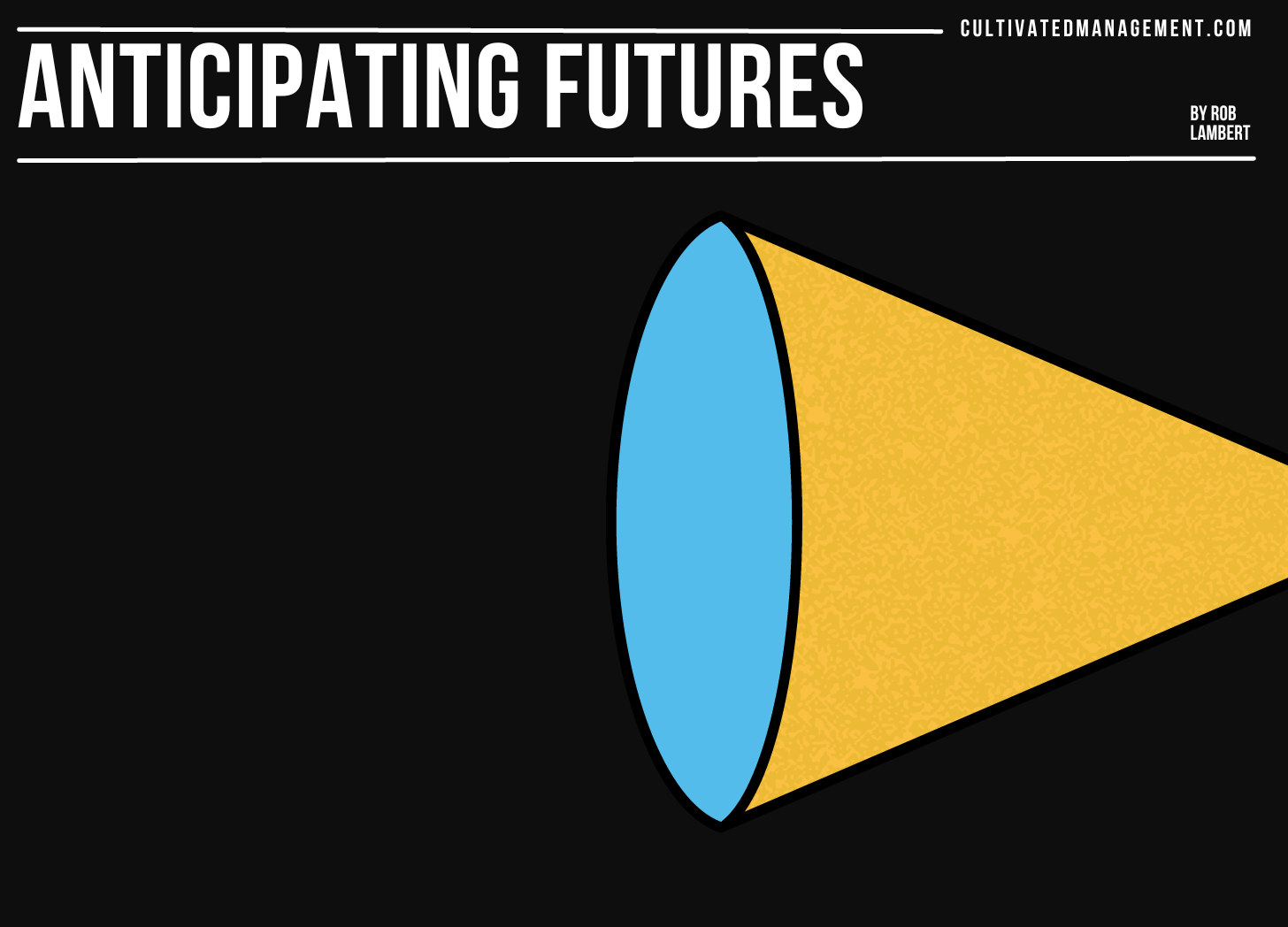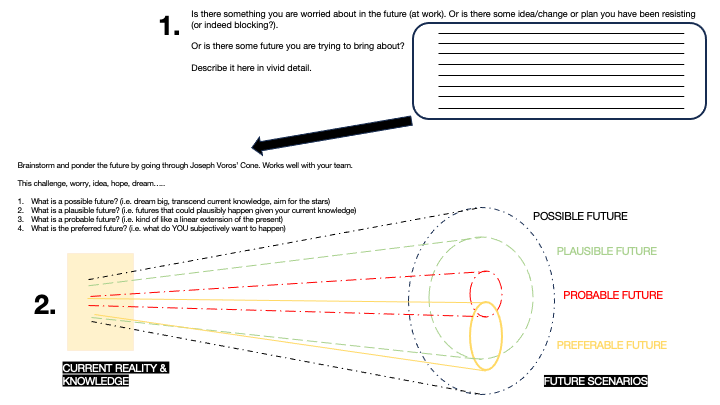Anticipating the future - 4 amazing archetypes to use

A lot of my work revolves around leading teams to brighter futures – and a lot of that work is about anticipating the future.
Designing and anticipating the future is the first fundamental step of the Releasing Agility model I use; paint a bright picture of the future and galvanize people around it.
It’s harder than I make it sound there, but we all want to know our work is leading to something bigger and better. We want to know what our True North is when things get tough. We want to understand the vision and mission of the businesses we work within.
The painted picture is the emotional aspect of our work. It’s something we can connect with. It’s an articulation of the problems we face as a business painted with a positive, futuristic lens. It’s a way of explaining what we’re doing in business so like minded and talented people feel a connection to the work.
Listing goals and metrics and measures doesn’t connect with people like a story does. Stories go where facts cannot (one of the 10 principles covered in the communication workshop) – and the painted picture is a way to tell a story.
We may never achieve this future but at least we have a direction, a path, a waypoint, a star to head towards. And this is why the future belongs to those who can communicate about it.
Seneca once said:
You must know for which harbor you are headed if you are to catch the right wind to take you there.
Another common way of saying this is “that no wind is favourable if you don’t know where you are going”. And the future ambitions, communicated well, is the destination we can connect to; the wind that will guide our sales; the harbor we are heading towards.
But what is anticipating the future?
Well, I’m going to share with you how I do this with clients. In fact, I will be running a small portion of this workshop at the SEETEST conference!
It starts with pausing, slowing down and thinking about some futures, and for this I often refer back to some archetypes. The archetypes help us in anticipating the future.
A legendary future thinker called Jim Dator created four potential archetypes to consider when thinking about the future. These are extremely helpful to think about in the context of your team, business, or even your life.
Continuity and growth
With this archetype the business (or you) continues as it is and gets better over time. Things keep incrementally getting a little bit better. No major changes needed, just some optimisation and improvements.
Think about the business now and consider what the future will be like if it keeps getting a little bit better and growing. This can help you to identify a few core things to tweak and improve. It may take a while to get better but our hope here is that things will continue to grow and keep improving.
This is the path many business leaders and managers adopt. Continue as is, but just be a bit better.
Collapse
Now we think about a more negative future. Things get worse until they collapse. Without major changes things just keep getting worse. Or things get so bad that eventually the business collapses. And many businesses go down this route – and I’d like to think that they didn’t plan to.
With no major interventions or changes things just keep heading south. The leaders and managers continue to do as they have done (or maybe do some epic failed interventions) – and things get worse. Many businesses are on this path now. The news is littered with businesses that have reached the end of the path.
Discipline
In the disciplined future the business deals with the bad, and it rewards the good.
Managers, leaders and employees fix the broken things and reward good work. More good work should get done, and the negative, bad, problematic stuff gets dealt with. But this requires discipline. Discipline in the now, and in the future.
You’ve heard me say over and over again that there are always more problems that we can ever solve, so we must fully comprehend the bright future and the strategy, so we deal with the right problems.
This requires discipline, hard conversations, prioritisation, data informed decision making and performance management.
Many leaders and managers want this, then lack the ability to bring about this discipline. They want better performance, better control of costs, better employee behaviours but often fail to hold the bar high and garner this discipline.
The idea here is to think about what your business would be like if you mustered that discipline.
- What would it be like if people stopped passing the burden and started fixing problems?
- What would it be like if low performance was dealt with?
- What would it be like if decisions were made using evidence rather than opinions?
- What would it be like if you accelerated the good, and dealt with the bad?
And this is not just about the now, but also about ensuring that discipline remains in the future as it becomes the norms of that business.
This is a bright future, but it requires behavioural change for many companies.
As a side note – this is my defacto approach to consulting and leading teams – highly disciplined fun teams where the good is accelerated and bad is dealt with.
Transformation
“Transformation” is about considering a very different company future. You are transforming, not incrementally getting better, nor applying discipline to fix things, but changing the paradigms of the company.
Many leaders start “transformation” programs but the reality is, they often apply the thinking from the “discipline” approach or the “continue and grow”. In other words, they talk about transformation but aim too low, don’t change anything and don’t muster any discipline either.
“We are going to transform by broadly doing what we’ve always done and fixing a few issues.” No wonder many transformation programs fail.
Transformation is more than simply fixing a few things, or hoping the future will be different, or applying a bit of discipline.
In this context, transformation is about looking at the paradigms of the business and shifting them. It’s not about being agile or lean, but potentially about being a fundamentally different business.
This one is hard. Most people cannot escape their own thinking to enable them to even think this big. And to truly transform an organisation, you’re going to need some outstanding communication, motivated leaders and a strong focus on bringing the future to life.
- How can you describe something that most people cannot see in their own mind?
- How can you guide people to transform when, in my experience, most people are happy to continue as is?
Transformational future thinking that creates a true transformation is wild, big, audacious – crazy maybe?
But there are many stories of companies who bring in a new leader and utterly transform the business.
The futures cone
The idea with these archetypes is to think through potential futures; to start thinking about anticipating the future. They are designed to get you to think about the pros and cons, the challenges, the realities and the potential path you may need to walk. And it requires big thinkers.
I wrote about dreamers and managers before, and how it’s the manager’s job to protect the dreamers.
Well, this kind of future thinking activity requires dreaming. And frankly, there isn’t enough dreaming happening in business. We’re all too busy grinding, hustling, meeting deadlines and hitting targets to dream about potential futures.
That’s why designing futures starts with pausing, slowing down and thinking about some archetypes.
And here is a futures cone model that I often use with leaders and managers to get them to visually see their options for the future.
(Note: I cannot find the true origins of the cone, but I did not create it! Well, I created this image but not the concept)

Assuming the team has some idea of their current reality, they can start to think about potential futures, and map them onto the diagram.
- What is a possible future? (i.e. dream big, transcend current knowledge, aim for the stars)
- What is a plausible future? (i.e. futures that could plausibly happen given your current knowledge)
- What is a probable future? (i.e. kind of like a linear extension of the present)
- What is the preferred future? (i.e. what do YOU subjectively want to happen)
And pay attention to number 4 here.
Number 4 gives you clues as to the preference of the people you are working with. Number 4 is all about what they want to happen. And this may not be what the business needs.
Any good leader or manager will spot this, and it gives you clues on how to engage them if the future plan is different to what they want, or how to train them, persuade them, educate or cajole.
I’ve seen many leaders come up with amazing plans only to see them derailed by someone influential who had a different “preferred future”.
A futures cone session works best as an immersive workshop where people can add stickers, post it notes or doodles to a collective visual. And then chat through the pros and cons. And ultimately come away with a plan for the future.
You could say that imagining futures is the easy part. Because after this you have to communicate, communicate, communicate*
After all, the future belongs to those who can communicate about it.
- I’ve got you covered here with the super power workshop
